Wildlife may not be the first thing you think of when you imagine Iceland. However, despite the sometimes harsh landscapes where volcanoes and glaciers rule supreme, Iceland’s animals manage to thrive.
Come to the Land of Fire and Ice for the chance to admire creatures of the land, sea and sky. Go horse riding, whale watching, or puffin spotting. Read on to discover more of Iceland’s wildlife and cute domestic animals, with tips on how and where to witness them.
- Check out these popular tour packages for your Iceland wildlife tour
Wildlife in Iceland
Arctic fox
The Arctic fox is the only land animal native to Iceland. They survived on the island through the last ice age and stuck around once the thick glacial ice receded.
This rather adorable creature – also called the white, polar or snow fox – is indigenous to Iceland’s neighbouring countries. As it thrives in the Arctic tundra, you might see one in Greenland, Northern Norway and Lapland.
Did you know that the white Arctic fox changes the colour of its coat for camouflage? They are white in winter but brown in summer. The blue Arctic fox, on the other hand, keeps its brown hue year round.
In Iceland you’ll see the largest populations of the Arctic fox where birdlife is most abundant: in the Westfjords. Foxes are protected from hunting in the Hornstrandir Nature Reserve in this region, so as a result they thrive here. Visit the Arctic Fox Centre in Súðavík to learn more about them.

Reindeer
Although not an endemic species, reindeer is one of the wild animals you can find in the Icelandic countryside. These mammals were brought over from Norway in the 18th century for herding, but reindeer husbandry never really took off. As a result they are now found roaming free in Iceland.
The only region you’ll see reindeer in is East Iceland. Visit in summer and you’ll have more chances of spotting them around Mount Snæfell, Vesturöræfi and Brúaröræfi. In winter they tend to come closer to the coastline.
- Related: Lapland’s reindeer culture
Marine wildlife in Iceland
Whales
You may not realise that Iceland is considered the whale-watching capital of Europe. That’s because a variety of whale species dwell in the waters surrounding this far northern island.
Embark on a whale-watching tour in Iceland and you could spot these gentle giants. The following species are the cetaceans you’re most likely to catch sight of in Iceland:
- Minke
- Humpback
- Bowhead
- Sperm
- Beluga
- Blue
Take a dedicated whale-watching tour from Reykjavík or Húsavík to get up close to these creatures of the deep. Visit Iceland in summer and you’ll have a greater chance of seeing them.
- Related: Whale watching in Iceland
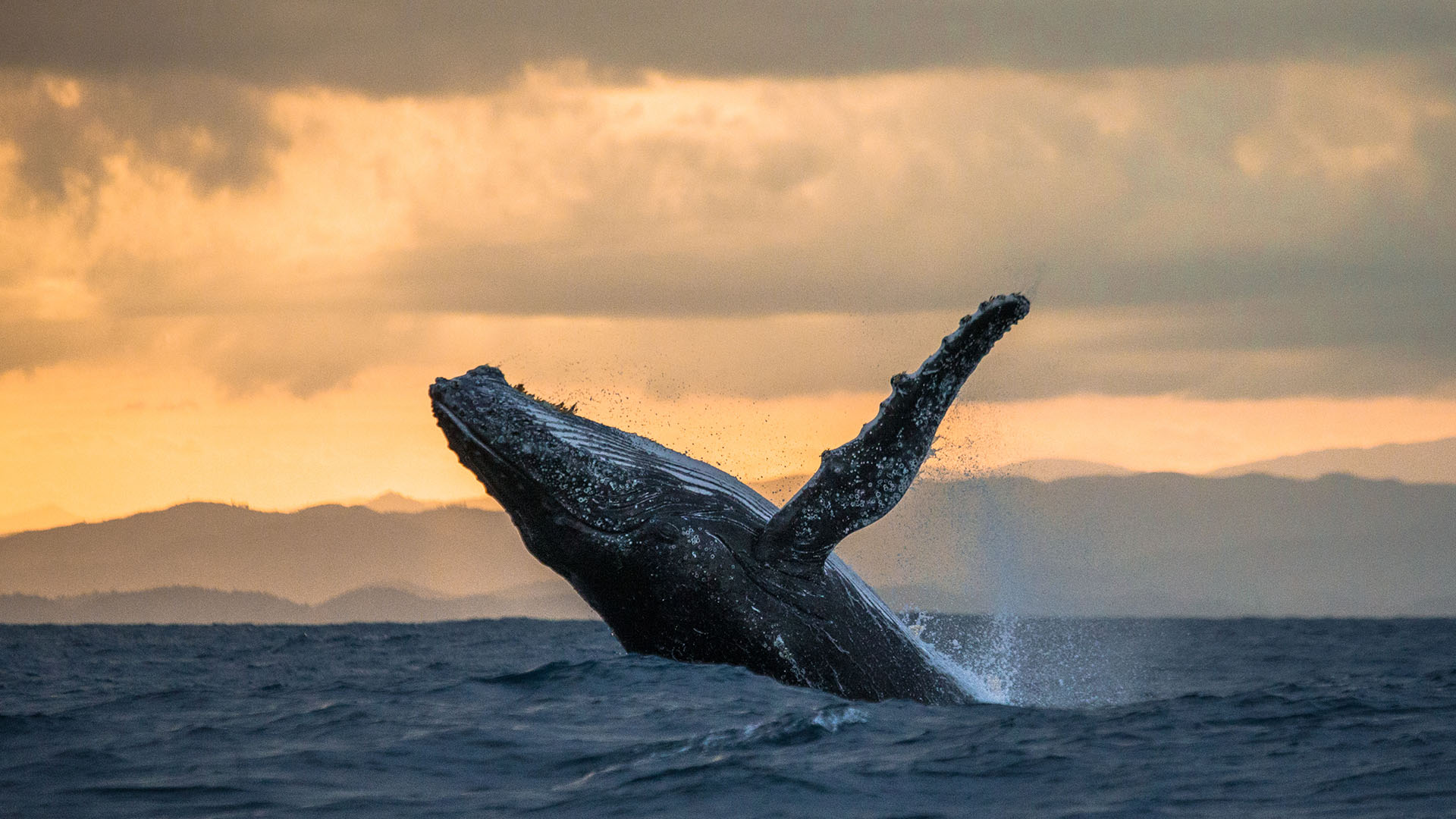
Orca
Also known as “killer whales” – although they are actually part of the dolphin family – orcas come to Iceland’s seas in the wintertime.
If you go to the Snæfellsnes peninsula in West Iceland, you might spot some from the shore or on a boat tour. Orcas thrive here in late winter as a feast of herring awaits them. The great thing about visiting this area in winter is that you also have a good chance of watching the northern lights.
Seal
Another marine species to see in Iceland is the seal. There are various colonies here, predominantly grey and harbour seals. Some dwell in the sea by Reykjavík, so keep an eye out for them if you take a stroll along the harbourfront.
You could also see them playing in the icy waters of the Jökulsárlón glacier lagoon in South Iceland. This happens to be one of the top sights in the country, an ethereal place where chunks of ice calve off the Vatnajökull glacier into the lagoon.
Dolphin and porpoise
If you’re on a whale-watching tour, you’ll also have the opportunity to see white-beaked dolphins and porpoises in Iceland. The former usually travel in pods of up to 100 and can be recognised by the white stripes on their flanks and bellies.
Porpoises, on the other hand, are the smallest cetaceans in Iceland, with a short nose and oval shape. You could spot them from the coast as they tend to stay closer to the shore compared to dolphins and whales.
- Look for local wildlife on a self-drive tour of Iceland
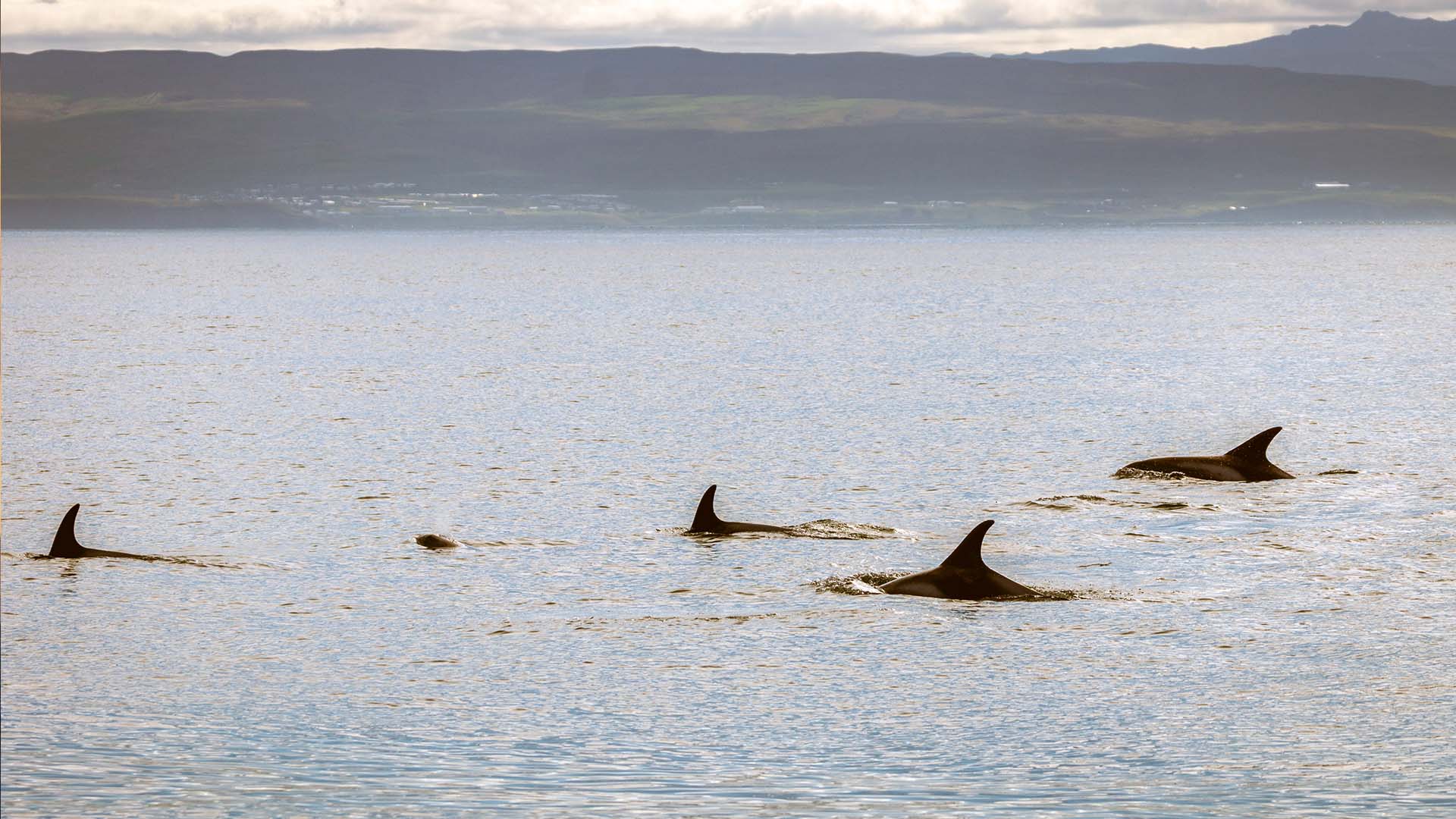
Birds in Iceland
You're bound to see a lot of winged creatures in Iceland. Ducks and geese bobbing in Reykjavík's central pond, Tjörnin, are always crowd-pleasers and are not shy about snatching bread right out of the hands of unsuspecting bystanders.
The most common seabirds you may spot are gannets, guillemots, razorbills, cormorants, gulls, kittiwakes, and others depending on the time of year. However, the following are particularly special bird species that live in Iceland.
Puffin
If you want to see Atlantic puffins in Iceland, come during the spring or summer. This is when around 60% of their global population nest in Iceland, which equates to approximately 8 to 10 million puffins each year.
Look out for these seabirds nestled among craggy rocks and perched along cliffsides, often with freshly caught fish dangling from their colourful beaks. However, you're in for a real treat if you see them in flight or attempting to land on the water. They are comically clumsy little creatures!
The puffin's little wings flap frantically when flying. Meanwhile, their approach to land on the sea more often than not ends with a splash and a tumble along the water's surface.
You can spy these guys during puffin tours from Reykjavík harbour, in the Westman Islands, and at the Látrabjarg bird cliffs in the Westfjords of the country. Puffin populations are dwindling around the world, so be sure to stay a respectful distance away when in their territory so you don’t startle them.
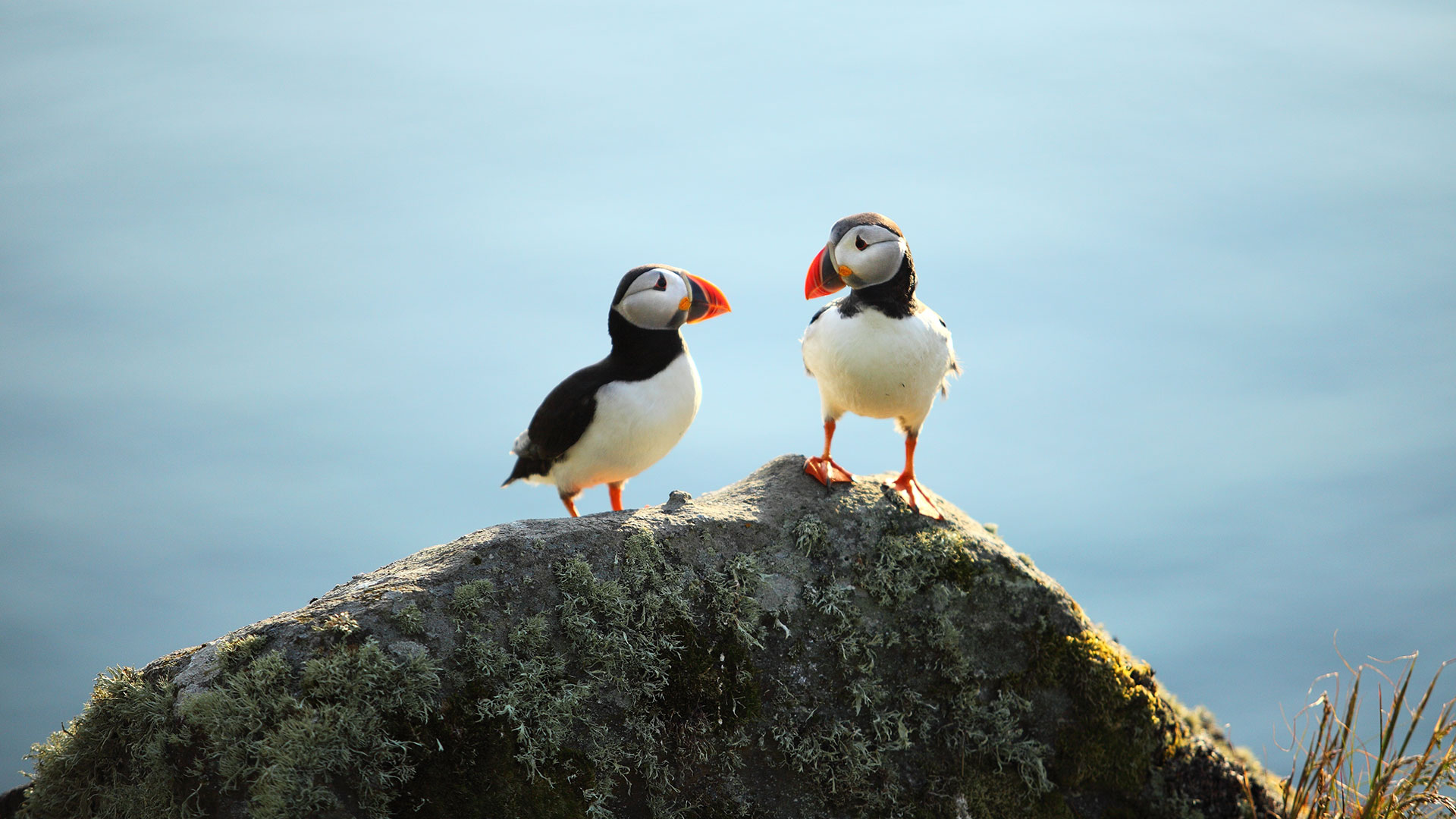
Oystercatcher
Also lovely to look at are the oystercatchers that populate Iceland's coastal areas and meadows. These wading birds are a stunning black and white, with a long, needle-like orange beak and bright red eyes.
Although most oystercatchers migrate south to Western Europe in the autumn, some stay put in Iceland. This means that you could see them in winter here as well as the summer.
Golden plover
How do you know when spring has sprung? In Iceland, it’s the arrival of the golden plover, or “lóa”, that symbolises the beginning of this season.
Like many other birds in Iceland, the golden plover spends the spring and summer here before migrating south for the autumn and winter. But what’s interesting is that the golden plover always likes to arrive on time. Visit Iceland around 23 March to time your arrival with that of this punctual bird!
There’s another reason why the lóa is symbolic. It inspired the 19th-century poet, Páll Ólafsson, to pen The golden plover has arrived to sing away the snow. This poem became a folk song that is well-known among Icelanders. Since then, the first lóa sighting of the year has for many marked the start of spring.
You can tell the lóa apart for its pretty birdsong and golden feathers. Keep an eye and an ear out for them among the heather lands in Iceland.
- Go birdwatching on a best-selling tour of Iceland
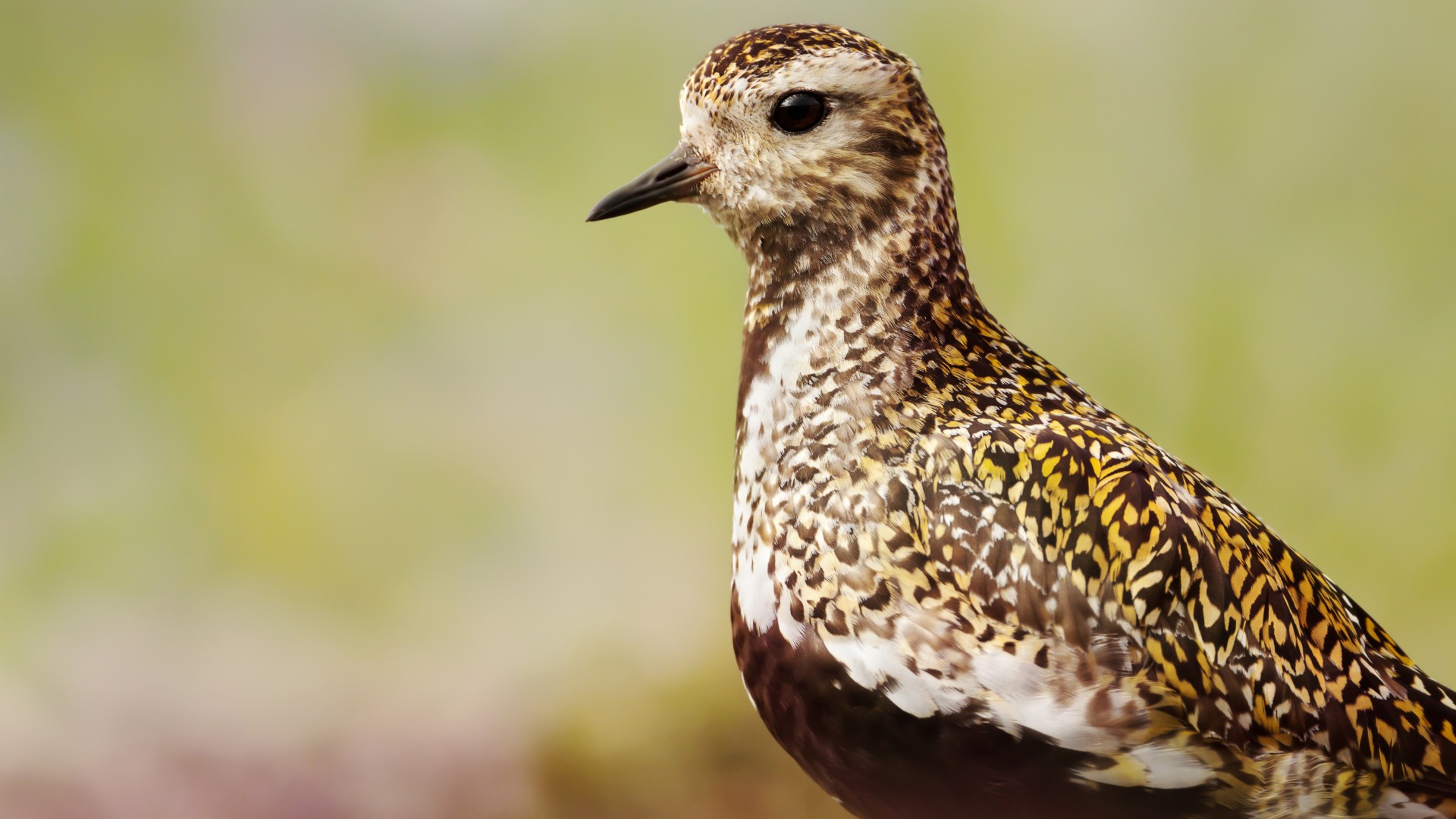
Arctic tern
The Arctic tern has a reputation for being fiercely protective of their nests. These little white birds, with characteristic black heads and sharply angular wings, will dive aggressively at anyone who wanders too close for comfort during nesting season.
For this reason, there are often signs indicating tern nests. It's in everybody's best interest to stay away. You can also spot them around Reykjavík's pond, often performing such impressive feats as catching food scraps midair!
Good to know: You shouldn’t feed the birds during the spring and summer. This is to protect the health of the birds around Reykjavík's pond. It is also to ensure that predatory birds don't flock to the area and prey on ducklings.
Gyrfalcon
Look up at the skies to witness the majestic gyrfalcon circling above. The largest of the falcon group, with a wingspan of up to 1.2 metres (4 feet), this mighty bird of prey is fast and powerful. It’s no wonder why it’s Iceland’s national animal.
With its white and grey feathers, the gyr is considered the most beautiful falcon. You can see it in Arctic coastal and tundra regions, such as Iceland. Try spotting one around the Lake Mývatn area in North Iceland. You might catch sight of a gyrfalcon swooping gracefully down to the lake to catch its dinner.

Domestic animals in Iceland
Icelandic horse
One of the most distinctive of Iceland’s animals is this breed, which descends from Norse horses. They are fluffy, sturdy and short in stature, rarely growing taller than 1.5 metres (4.9 feet). But don’t mistake them for ponies, or say so to a proud Icelander. These guys are horses. End of story!
On top of that, the Icelandic horse is even more impressive than other breeds as it boasts five gaits, while other horses typically display four. The fifth gait, "tölt", is smooth but fast and will have you gliding through Icelandic scenery virtually bounce-free.
- Add a horse riding tour to one of these best-selling Iceland travel packages
Why are Icelandic horses unique, you might ask? Essentially it’s thanks to regulations on import and export. It's illegal to import horses to Iceland and, if one leaves the island, it can never return. This is to protect the purity of the breed and to keep disease out of the country.
If you head up to Skagafjörður, in North Iceland, you can see the country's largest horse roundup pen. The area is the mecca of horsemanship in Iceland and a good place for equine encounters and riding tours.
We also recommend horse riding to Írárfoss waterfall in South Iceland, or in the Mosfellsdalur Valley outside Reykjavík.
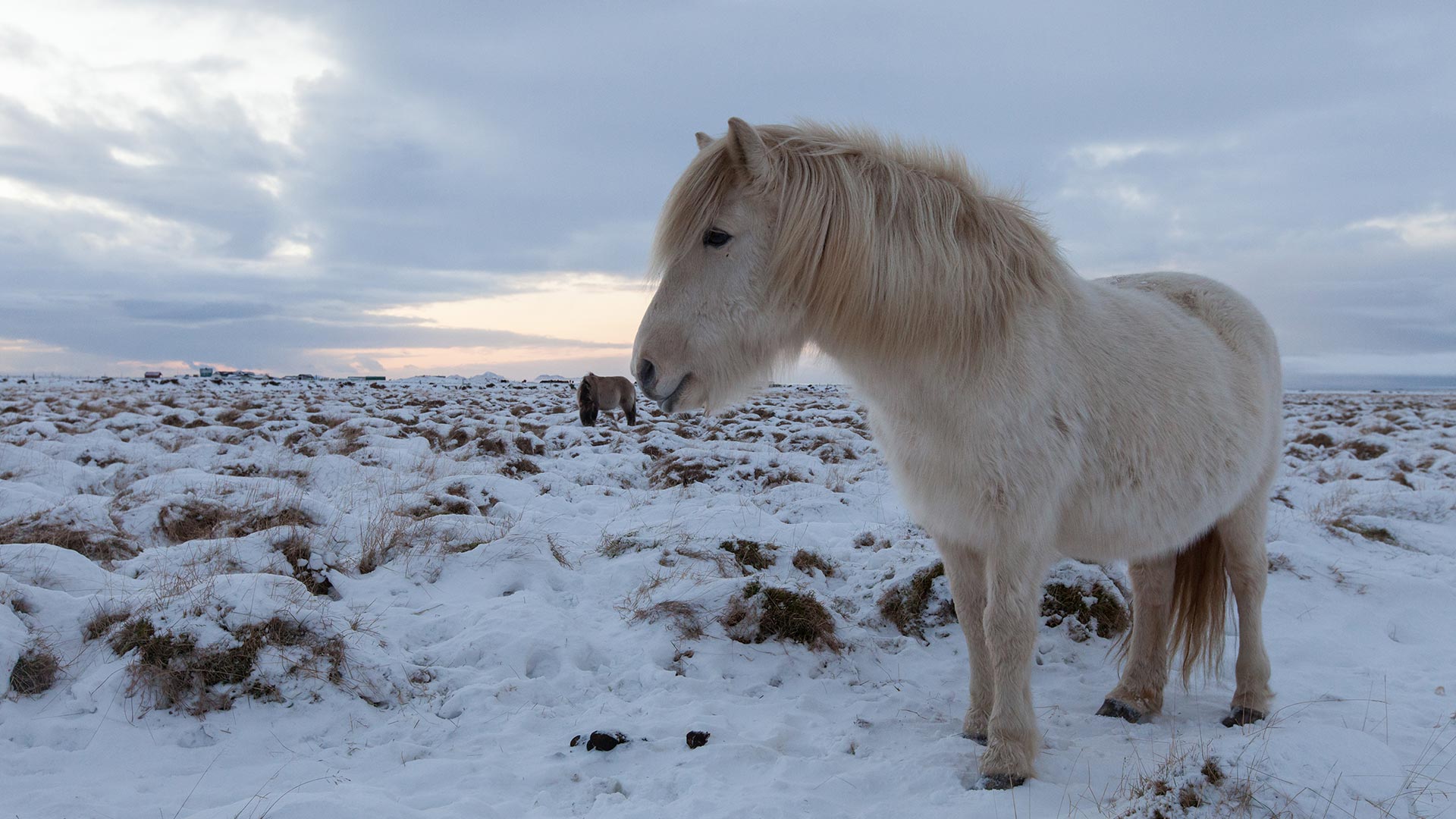
Icelandic sheep
The Norsemen also brought Northern European short-tailed sheep over from Norway many centuries ago. They continue to be an important source of food and warmth for the islanders.
In fact, the sheep’s fleeces are used to make “lopi”, an Icelandic wool that is warm, light and waterproof. You can bring home a “lopapeysa” (traditional Icelandic jumper) woven with the natural black, white, brown or grey coloured wool.
Drive outside of Reykjavík in the summer months and chances are you’ll spot some Icelandic sheep. These fluffy fellas roam the countryside and you may come across them along roadsides or crossing the highway. All the more reason to remain vigilant behind the wheel!
Lambing season is May and June, a great time to visit if you're a sucker for adorable baby animals (who isn't?). You’ll see the little darlings following closely behind their mothers while they graze.
Icelandic sheepdog
Yes, you guessed it – the Norsemen also took sheepdogs with them from Scandinavia many centuries ago. You may see one in Iceland if you visit or pass a farm in the countryside. These energetic dogs are experts in herding sheep, of course, with sharp hearing and impressive agility.
This specific breed is similar to the chow and husky dogs in their build, with a fluffy coat and curled tail. They are rather cute too!
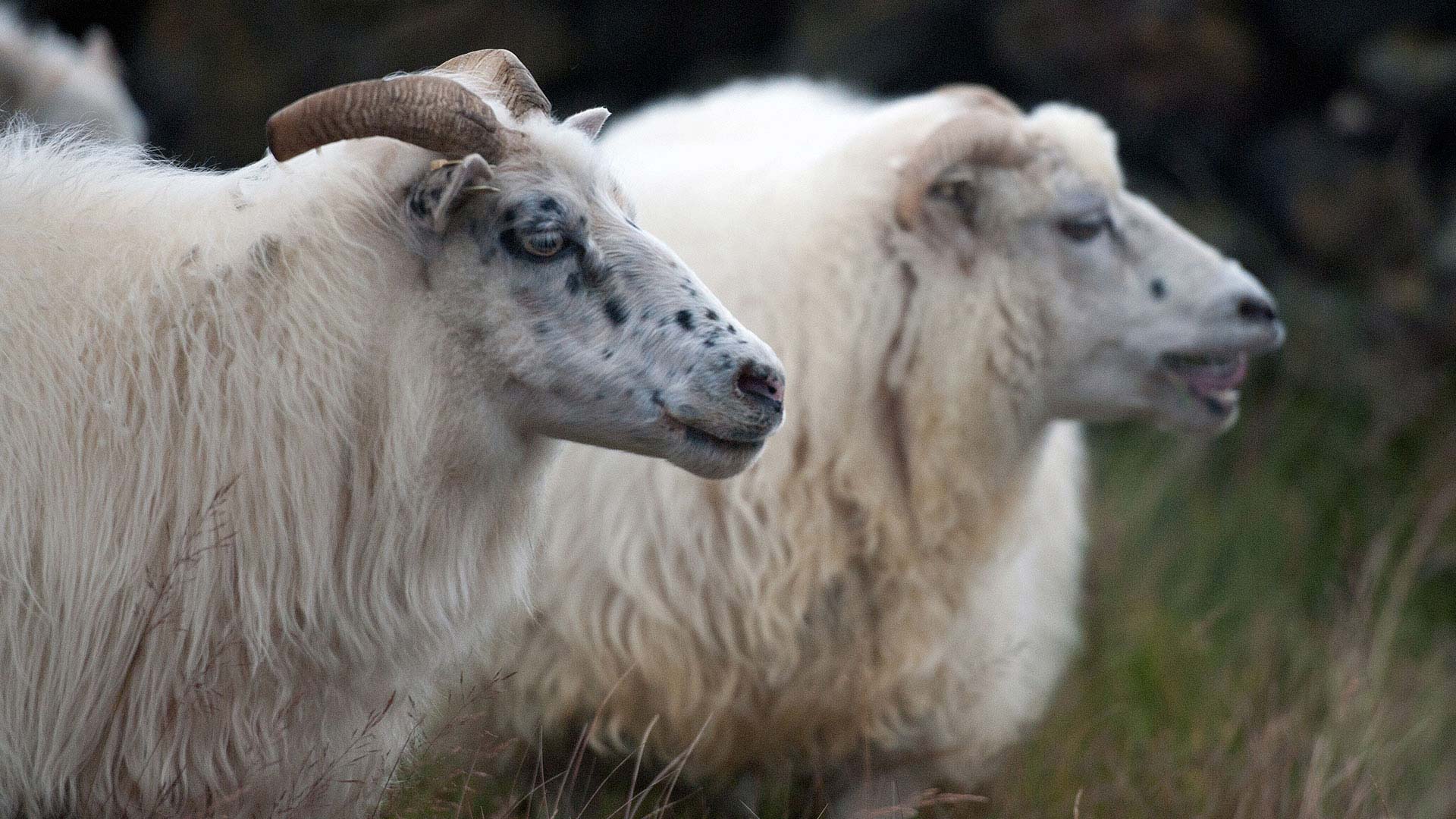
Find out more about Iceland's animals and wildlife
Here we've answered some commonly asked questions about animals and wildlife in Iceland.
What animals live in Iceland?
Here's an at-a-glance list of animals in Iceland:
- Arctic fox
- Reindeer
- Whales
- Orca
- Seal
- Dolphin
- Porpoise
- Puffin
- Oystercatcher
- Golden plover
- Arctic tern
- Gyrfalcon
- Icelandic horse
- Icelandic sheep
- Icelandic sheepdog
This is in addition to small land mammals like mink, rabbit and mice, as well as insects and small fish.
You might assume that polar bears live in Iceland, given the country’s location near the Arctic. However, Iceland is not a habitat for the polar bear.
On very rare occasions, they can venture down in search of food. This can be a sign of melting ice in the Arctic, meaning that the polar bear is forced to venture further from their natural habitat.
What dangerous animals live in Iceland?
Interestingly, there aren’t any dangerous animals that live in Iceland. There aren’t even any mosquitoes here to pester you!
As with most animals, you must respect their space and not get too close. The exemption is the Icelandic horse, as they are very sociable and you can of course enjoy a horse riding tour on your trip.
What animals are native to Iceland?
These are the animals native to Iceland that live here for all or part of the year:
- Arctic fox
- Whales
- Orca
- Seal
- Dolphin
- Porpoise
- Puffin
- Oystercatcher
- Golden plover
- Arctic tern
- Gyrfalcon
Other native birds that come to Iceland at some points in the year include gannets, guillemots, ravens, razorbills, cormorants, gulls and kittiwakes, among others. There are also over 300 species of fish in Iceland’s waters.
What is Iceland's national animal?
The gyrfalcon is considered to be Iceland’s national animal. This bird of prey is large and fast, symbolising freedom and power.
Are there animals in the Blue Lagoon, Iceland?
Don’t worry, there aren’t any animals in the Blue Lagoon. You can relax and enjoy soaking in the warm, mineral-rich waters of Iceland’s top geothermal spa. No creepy crawlies here!
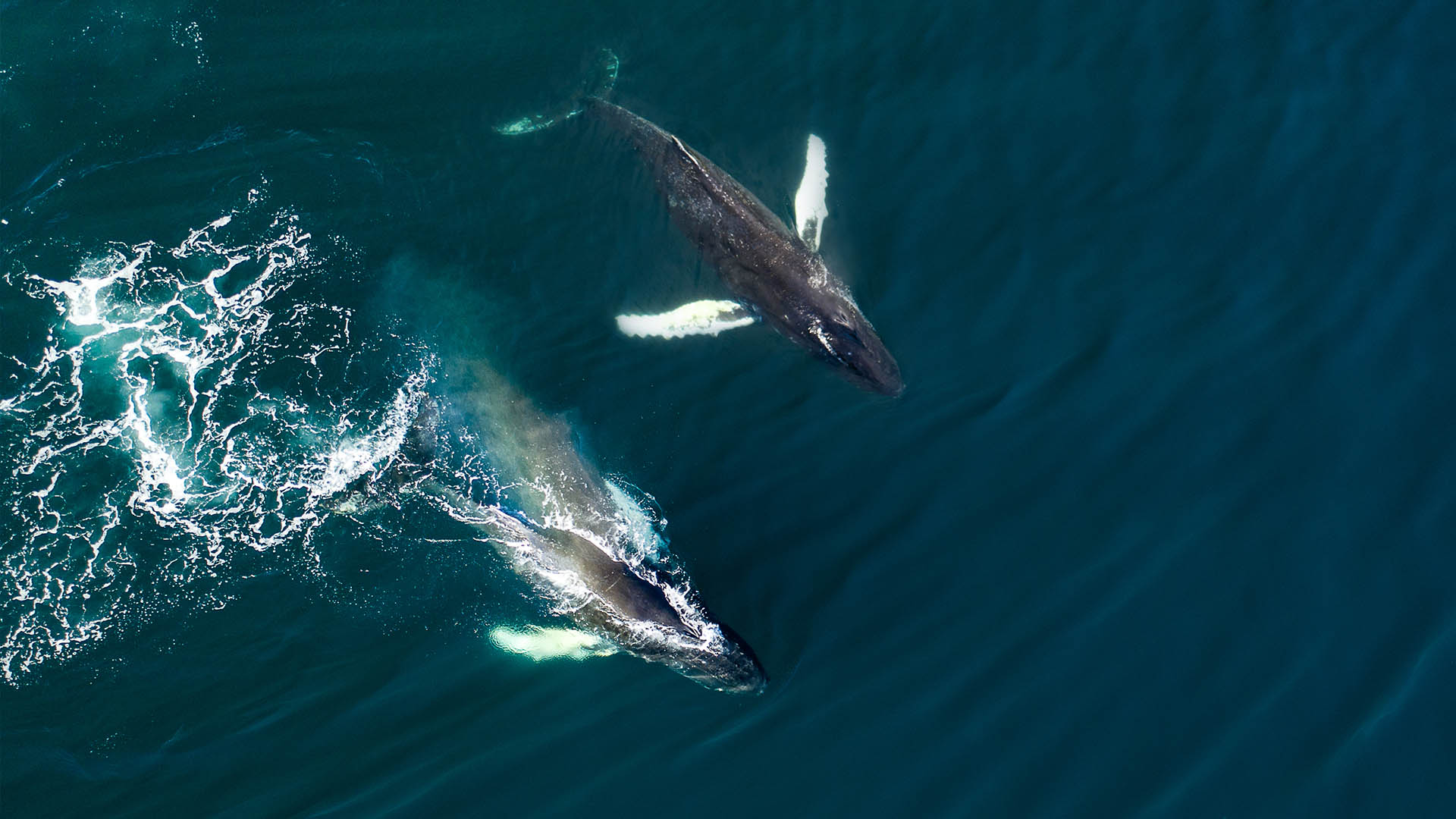
See how many of Iceland’s animals you can spot on a tour of the country. You may want to go whale watching, horse riding, or try your luck sighting other Icelandic wildlife. If you want to look into how you can visit, these popular Iceland vacation packages are a good place to start.
Or, get in touch with us and a Reykjavík-based travel expert will plan an unforgettable adventure for you.
